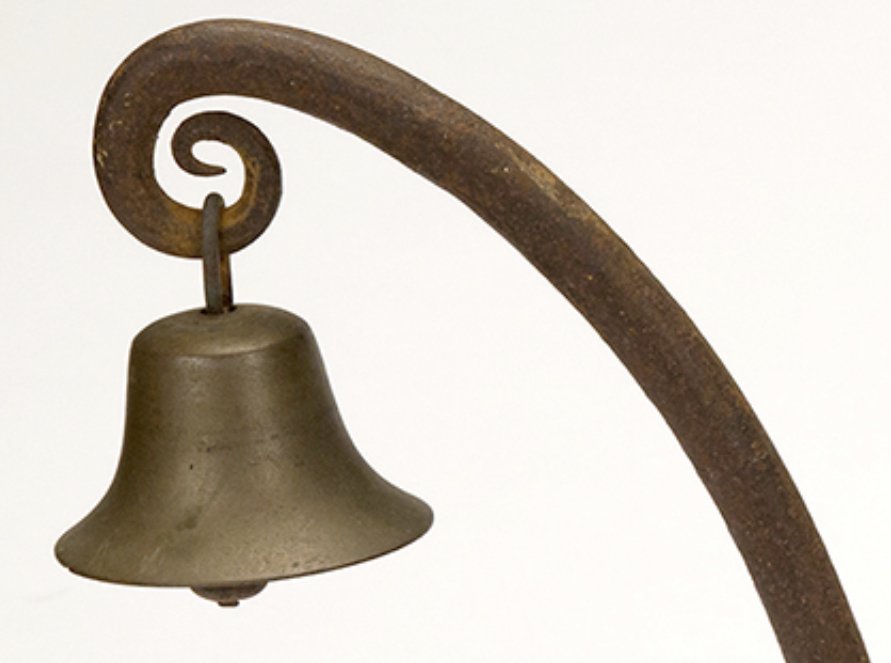
Holidays and their Origins
Holidays and their Origins
Halloween
Halloween's origins can be traced back to the ancient Celtic festival of Samhain, which was celebrated around 2,000 years ago. Who is Samhain? Samhain was described as a powerful and special demon of hell and was one of the 66 Seals. Legend has it, he could only rise when summoned by two powerful witches through three blood sacrifices over three days, with the last sacrifice day on the final harvest, Halloween. Once risen, Samhain could raise ghosts, zombies and ghouls among other creatures. His occult name is Sawin/Sauin.
The Celtic Festival of Samhain marked the end of summer and the harvest, and the beginning of winter. The Celts believed that the veil between the living and the dead was at its thinnest on the night of Samhain. The Celts celebrated Samhain with bonfires, dancing, divination, and wearing costumes. The bonfires were meant to guide souls to the afterlife and to keep evil spirits away. The Celts wore costumes, often animal heads and skins, to avoid being recognized by the ghosts and to confuse them. The Celts believed that the spirits of those who died during the previous year would return to Earth on the night of Samhain. They also believed that the new year began on November 1, the day after Samhain.
Is Samhain the same as All Hallows Eve? The traditional night of Samhain in the Celtic religion, began to be called All-Hallows Eve and, eventually, Halloween.
Halloween has become a global phenomenon, comparable to Christmas in its importance and widespread celebration. This phenomenon causes people to take part in the tradition of decorating their homes mimicking death, witchcraft and demonic depictions, just as they would to decorate for Christmas. Many parents cannot wait to dress up their children as popular characters from their favorite television shows to knock on doors for free candy. Once they get the candy bags home, its time to “check the candy” for anything that would harm their precious child. (Am I the only one that see’s the danger in this?) Others look forward to this night to put on a costume, which is typically something inappropriate they wouldn’t normally wear. This night usually involves liquid influences or worse, with them behaving out of character, hiding behind the guise of said costume. Then there are those who use this one night, where a costume would normally go unnoticed, to partake in wickedness that they try to withhold every other day of the year.
In reality, putting on a costume may hide your behavior from strangers, but it doesn’t hide your behavior from The Most High, he see’s it ALL! Something to think about the next time you take part in this Pagan festival without knowing how it originated!
Easter Celebration
The popular celebration of Easter always falls on the first Sunday after the first full moon following the spring equinox. Most stores are filled with colored eggs, baskets, bunny rabbits and candies. Have you ever wondered what that has to do with Christianity? Let’s dive into this popular holiday. The photo depicts the Germanic goddess “Ishtar” which is pronounced “Easter”. Many feel Easter was originally the celebration of Ishtar, the goddess of fertility and sex, based on the pronounciation of the name. Her symbols like the egg and bunny were and still are fertility and sex symbols. How did this turn into a Christian holiday?
Let see what Wikipedia has to say about Ishtar.
The name Ishtar is likely Semitic in origin, and was identified in ancient times with Canaanite goddess Ashtoreth or Astarte (Biblical Hebrew עשתרת). It is possible that the underlying stem is the same as that of Assur, meaning the "leading one" or "chief." The older Sumerian name, Inanna, means "Great Lady of An"—An (or Anu) being the god of the sky or heaven.
Some scholars have suggested that Esther and Mordecai—the heroes of the Biblical Book of Esther—may be Judaized versions of some lost story about Isthar and the Babylonian deity Marduk. Their names, at least, are indeed similar to the Biblical ones. Scholars likewise speculate that Eostre, the Anglo-Saxon goddess of Spring whose name later gave rise to the modern English word "Easter," may be etymologically connected to Ishtar.
In the archaeological record, Ishtar/Inanna was first worshiped at Uruk (Biblical Erech) in the earliest period of Mesopotamian history. Incantations, hymns, myths, epics, votive inscriptions, and historical annals celebrated and invoked her as the force of life.
Ishtar's reign did not normally depend upon a particular male consort. Although sometimes portrayed as subject to higher male authorities, her position in the Babylonian pantheon, in practice, was the highest.
Ishtar's genealogy varies depending on the source. She is sometimes described as the daughter of the moon goddess Ningal and her consort, also a moon god, Sin (or Suen), who were the patron deities of Uruk. In other traditions, however, she is the daughter of the distant sky god, An. Later she also is portrayed as his wife.
Temples devoted to the worship of Ishtar/Inanna were constructed in each of the great Mesopotamian cultural centers:
E-anna, "house of An," in Uruk
E-makh, "great house," in Babylon
E-mash-mash, "house of offerings," in Nineveh
In the sixth century B.C.E., the great Babylonian king Nebuchadnezzar II constructed the mammoth "Ishtar Gate" in honor of the goddess.
On monuments and seal-cylinders Ishtar appears frequently as a warrior, with bow and arrow or other implements of war. She was invoked as a goddess of battles, particularly among the warlike Assyrians. Before battle, the priestess-vicar of Ishtar would appear before the Assyrian army, clad in battle array and armed with bow and arrow (much like the Greek Athena). At other times, she is depicted simply clad in long robes with a crown on her head and various animals—bulls, lions, owls, snakes, etc.—as her symbol.
As the goddess of love and fertility, Ishtar was the guardian of sacred harlots and is described as having sacred priestess-prostitutes. Statuettes have been found in large numbers representing her as naked. In Babylon, she was sometimes portrayed Madonna-like as the mother of the god Marduk. In later times, it should be noted, the priestesses of Ishtar were virgins who were not permitted to marry.
Together with the moon god, Sin and the sun god, Shamash, Ishtar is the third figure in a triad personifying the moon, the sun, and the earth. In this trinity, the moon represents wisdom, the sun personifies justice, and the earth represents life force. This triad overlies another: An—heaven; Enlil—earth; and Ea/Enki—the watery deep. Ishtar is generally portrayed as the twin of Shamash.
Ishtar also appears on the top panel of the Uruk vase, one of the most famous ancient Mesopotamian artifacts. The relief on this vase seems to show Ishtar/Inanna conferring kingship on a supplicant. Various inscriptions and artifacts indicate that kingship was one of the gifts bestowed by Inanna on the ruler of Uruk.
In late Babylonian astrology, Ishtar was related to the planet Venus. As the most prominent female deity in the late Babylonian pantheon, she was equated by the Greeks with either or both Hera and Aphrodite. Roman mythology renders Aphrodite as Venus, and thus the planet is indirectly named for Ishtar. The double aspect of Ishtar as the goddess of both fertility and war may correspond to the difference between Venus as a morning star and as an evening star.
Ishtar, by various names, continued to be an important deity until the advent of Christianity in the Roman empire and Islam in the Arabic world and Persia. These monotheistic religions and the civilizations they inspired insisted on the existence of only one deity, a masculine god who jealously commanded that He alone be worshiped.
Below is the reconstructed Ishtar Gate, originally located in Babylon, now in the Pergamon Museum in Berlin.
The modern English term Easter, cognate with modern Dutch ooster and German Ostern, developed from an Old English word that usually appears in the form Ēastrun, -on, or -an; but also as Ēastru, -o; and Ēastre or Ēostre. Bede provides the only documentary source for the etymology of the word, in his eighth-century The Reckoning of Time. He wrote that Ēosturmōnaþ (Old English 'Month of Ēostre', translated in Bede's time as "Paschal month") was an English month, corresponding to April, which he says "was once called after a goddess of theirs named Ēostre, in whose honor feasts were celebrated in that month".
Ēostre (Proto-Germanic: Austrō(n)) is a West Germanic spring goddess. The name is reflected in Old English Ēastre. By way of the Germanic Month bearing her name, she is the namesake of the festival of Easter in some languages.
Easter, celebrated in modern times with colored eggs, chocolate easter bunnies and not to mention the religious hypocrisy celebrated in churches all over the world year after year is attributed to at least two goddesses from ancient times. This hypocrisy, especially in churches promotes practicing idolatry right under your noses! This is why it is so important to research the origins of every day customs that are passed from generation to generation causing you to participate in idolatry worship. Celebrating Easter is celebrating these deities, therefore practicing idolatry which is breaking one of the Laws of the Creator; One of the 10 commandments.

Thanksgiving…
Families traveling from far and near, coming together on the 4th Thursday of November every year to cook an elaborate meal, eat, drink, and spend quality time together in order to “give thanks” for all that we have and hold dear. People go all out, spending hundreds of dollars on food they would normally not spend to feed tables from anywhere from 5 to 100 people or even more! Some people take this time to feed the less fortunate, filling food pantries and homeless shelters with hot food to fill up the bellies of those who would normally not have a hot meal that day. This seems like a great thing to do as a decent human being, but why wait for one time a year to spread the joy and love of eating a hot meal together? And why in the name of “Thanksgiving”, do we really know the origin of the first Thanksgiving? Let’s look at the history of the first Thanksgiving. Thanksgiving originally did not have anything to do with feasting, it in fact involved fasting, praying and being thankful for a successful harvest. Later on in history it turned into a feasting celebration.
Our school history classes teach us the first Plymouth Settlers, Pilgrims, (Europeans) sat together with the Native Americans and shared a meal being thankful for a successful first harvest, this may not be the case. As a matter of fact, the Plymouth Settlers arrived to America about 4 years prior to the infamous Mayflower arrived. When the Europeans arrived, they brought with them a foreign illness which killed the Native people at an alarmingly high rate. This sickness wiped out approximately 90% of the Native Indians, who originally populated America. This mysterious sickness made it easier for the colonizers to take over the land. There are some that believe the Europeans came to the land to kidnap and sell the Natives into slavery.
History shows no evidence the Natives were not even invited to the first Thanksgiving. Massasoit, the leader of the Wamponoag Tribe declared an alliance with the settlers, an agreed both parties would leave their weapons when trading with one another. The Wamponoag tribe heard gun shots, which was the Europeans shooting in celebration, so members of the tribe showed up to honor a mutual-defense pact they had agreed to, they thought they were in combat. After some discussion, they stayed 3 days with the Europeans and joined the feast. Prior to this alliance, the first encounter of the Pilgrims and Wamponoag Tribe was when the Pilgrims stole from the tribe’s winter provisions. The alliance was formed between the groups only because the Wamponoag people were so little in number due to the foreign disease brought to the land by the Europeans in the years prior. It was less about harmony between the two but more about the survival of the tribe. This treaty stayed in place for about 10 years until Massosoit passed away and his son Wamsutta took over. By then, tensions began to simmer again. Shortly after Wamsutta took over, 25,000 European colonizers arrived too the land. Wamsutta himself died in a mysterious death while visiting the puritans to discuss gathering unrest between the two groups. His successor, Metacomet only fanned the flames between these two groups. The Europeans didn’t only have conflict with the Wamponoag Tribe but also with other tribes. These conflicts were deadly, resulting in the Europeans imprisoning, enslaving, and executing Native people. This conflict went on for a while, resulting in the Pequot Massacre of 1636 where 700 Natives were massacred and the beheading of the tribe leader, Metacom in 1676. His head was put on a stake and displayed for 25 years by the Europeans.
Does this sound like something that should be celebrated annually?

Christmas…
Jingle Bells! Christmas Trees! Candy Canes! Presents! Santa Claus! Ornaments! Garland Wreaths! Rudolph the Red Nose Reindeer!
These are some of the things you think about when you hear the word Christmas or when December comes around. Do you really know what Christmas is really about? Where the idea of a Jolly Old Bearded Man coming thru the chimney with a big red bag filled with presents for all the children? Seems pretty ridiculous when you think about all of the homes today without a chimney? Does Santa not visit those living in apartments and town houses? How does a large red sack fit down a narrow chimney anyway? Not to mention, does this Jolly Old Man set off any alarms as he sneaks into your house in the middle of the night? Do the dogs alert you because there is a stranger standing next to your Christmas tree? I sure do hope your dogs aren’t Rottweilers! YIKES. We all know Jolly Old Saint Nick is a made up story told to millions of children around the world. But where did this idea come from?
Let’s start with the infamous “Jingle Bells” song. If you research the original Jingle Bells, its not actually a song at all, Jingle Bells was a Slave Collar with Bells. This was a cruel and humiliating deterrent so slaves would not run away from their master. These collars were attached to the back of the slaves neck and was made of iron, which is very heavy. These Jingle Bells varied in size and design, some were as tall as a couple of feet. This was a form of punishment for potential run away’s. Many slaves would hear of an upcoming “slave sale” and try to run away to escape being sold or to reunite with loved ones which could be hundreds of miles away. The slave masters dogs would be able to hear the bells from far distances and would be released to retrieve the run away slave.
Lets take a look at the Christmas Tree origin. Evergreen Fir trees are the typical tree of choice during this season. These trees are decorated with lights and ornaments including some sort of center piece at the top. Some put stars, others put angels, but you get the drift. These Evergreen trees get their name from staying green year round. They have been used to celebrate winter festivals for thousands of years, long before Christianity existed. Pagans in Europe used branches from some of these trees to decorate their homes and uplift their spirit during the winter season. Romans, used Evergreens to decorate their temple during the festival of Saturnalia.
The festival of Saturnalia was held during mid-December, honoring the agricultural god Saturn. Many of the traditions associated with Christmas such as wreaths, candles, feasting and gift giving come from this festival. Gift giving during this time was not made to each other but instead given/offered to the gods during the winter sowing season. It was a ritual of mid winter and the winter solstice completed by the older farmers. This festival was originally only for one day, but then turned into a week long ceremony beginning on the 17th of December thru the 25th. Western Christian Churches typically associate Christmas with the birth of “Jesus” but settled on celebrating on December 25th so they could incorporate the holiday with the Saturnalia Festival.
So when you celebrate Christmas, you are actually celebrating Saturnalia, paying homage to the God of Saturn, which in turn is practicing idolatry.

Valentine’s Day…
Why do we Celebrate Valentine’s Day? Many use this day to confess their undying love for their mate. This practice is coupled with the gifting of flowers, chocolates, candies, heart shaped stuffed animals and anything else marketed with hearts in shades of red and white. Where did this holiday come from? The earliest record of the story of Valentines Day is the festival of Lupercalia. Lupercalia was an ancient pagan festival held each year in Rome on February 15th celebrating fertility. Men would strip down naked and sacrifice one or more male goats, in representation of sexuality. The animals blood would then be smeared on the foreheads of two Luperci, or Roman Priest, with the very knife used to kill the animals. The blood was then removed with a piece of milk-soaked wool as the Luperci laughed. Once the RItual Sacrifice was complete, the feast of Lupercal began where they would cut strips of the hide, also called thongs or februa, from the newly sacrificed goats and use it to whip young women, to promote fertility.
According to Roman Legend, ancient King Amulius ordered Romulus and Remus, his twin nephews and founders of Roma to be thrown into the Tiber River to drown in retribution for their mother breaking her vow of celibacy. The servant tasked with this deed took pity on them and placed them inside a basket on the river instead. The “river-god” carried the basket with the brothers in them down river to a wild fig tree where it became caught in the branches. The brothers were rescued and cared for by a she-wolf in a den at the base of Platine Hill where Rome was founded. The twins were later adopted by a shepherd and his wife and also became shepherds. Once the boys grew of age, they killed their uncle who ordered their death. They found the cave den of the she-wolf who nurtured them and named it Lupercal. Some say Lupercalia took place to honor the she-wolf and please the Roman fertility god Lupercus. How Romantic. . .








